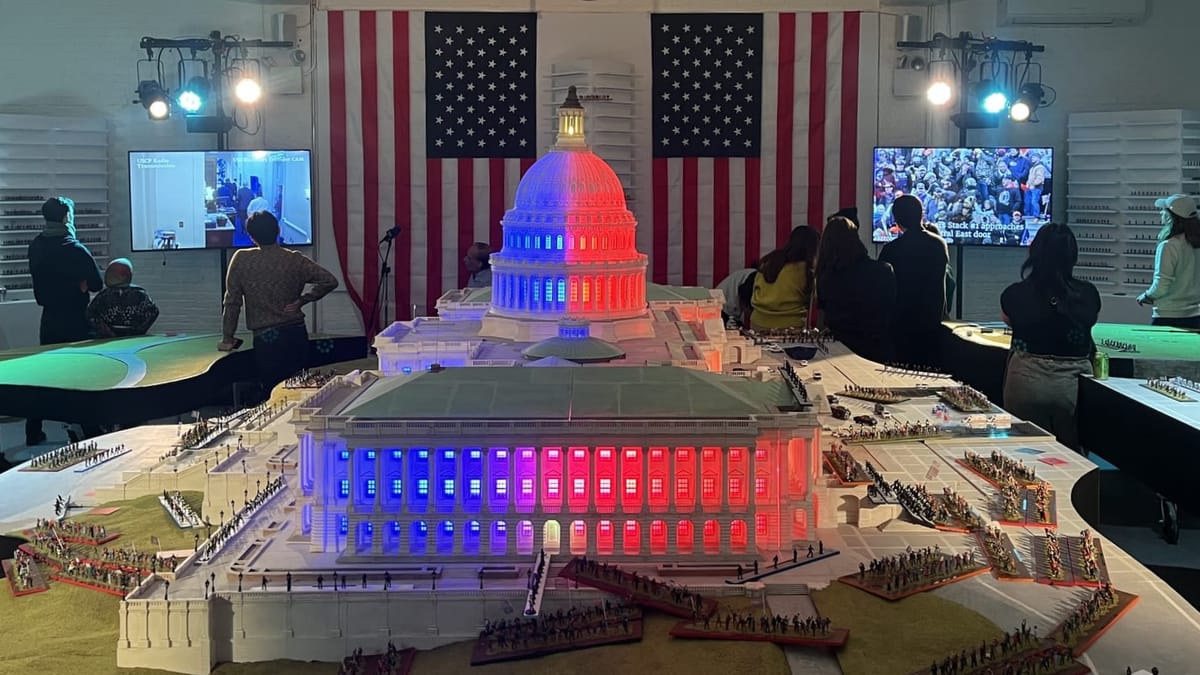Why does the January 6 wargame even exist?
A conversation with the creators of Fight for America! about art, politics, and player safety.

Earlier this month, I attended Fight for America! an immersive wargame installation based on the events of January 6. While powerful as a work of art, the piece itself left me with a number of questions regarding an artist’s responsibility to both the subject of their work and those experiencing it, especially in the context of an interactive art piece. Given that champions of violent technofascist white supremacy and post-constitutional rule have been given access to the levers of power, how does this speak to resistance? How does it facilitate a collective conversation that doesn’t feel self-serving, removed from the real and present danger of our current political moment? If this piece is meant to evoke a desire to “fight for America” in its participants, how can it do so thoughtfully, safely, and with a tangible call to action?
Rascal sat down with Neal Wilkinson, the game’s lead artist, and Christopher McElroen, artistic director of the game’s not-for-profit production organization the american vicarious, to discuss the game’s origins, potential safety precautions (or lack thereof), and what they believe Fight for America! adds to the understanding of this precarious moment of American history.
While the game itself provided a profound emotional experience, this conversation left me wanting. There are very real dangers that both gaming and political spaces present to marginalized people, including a journalist with an eye towards radical, revolutionary art. Throughout the conversation, it became clear that consideration for the safety of the players involved (and the designers themselves) was little more than an afterthought.
Their responses revealed a shocking lack of knowledge surrounding the risks of running a live action roleplaying game and a naive perspective on what dangers might arise. On a psychological level, bleed — a concept coined by Emily Care Boss to describe the transfer of in-game emotions to the player experiencing them — can cause lasting damage if handled without care. On a physical level, their primary concern regarded players who would be upset at losing the game itself, not the real-world ideologies that inform the very characters they ask people to portray.
They had not considered that pardoned insurrectionists, family members, or their supporters might attend these games; or that the inherently political nature of this game would evoke anything more than conversation in a country where guns can be carried with near-impunity, which is true even for liberal Brooklyn. Their answers regarding everyone involved in that day, referring to both insurrectionists and police as little more than pawns to larger powers, also overlook the very long history of right-wing paramilitary organization that has occurred over the last few decades in preparation for this moment — preparation which enabled this attempted coup in the first place.
Art does not exist outside of the context of its subject, especially when confronting such a volatile political event that has not yet become history. To view themselves as outside the influence and impact of these violent implications is an act of ignorance and privilege that I hope the team behind Fight for America! takes into serious consideration before staging this performance again. If they do not, they run the risk of endangering their players and themselves.
This interview has been condensed and lightly edited for clarity and length.





